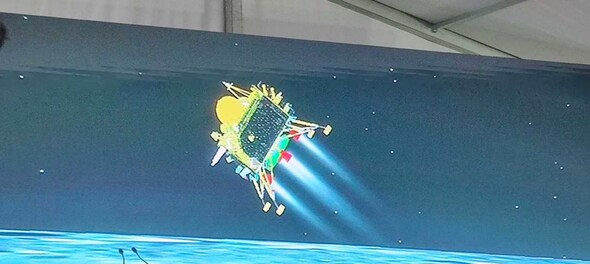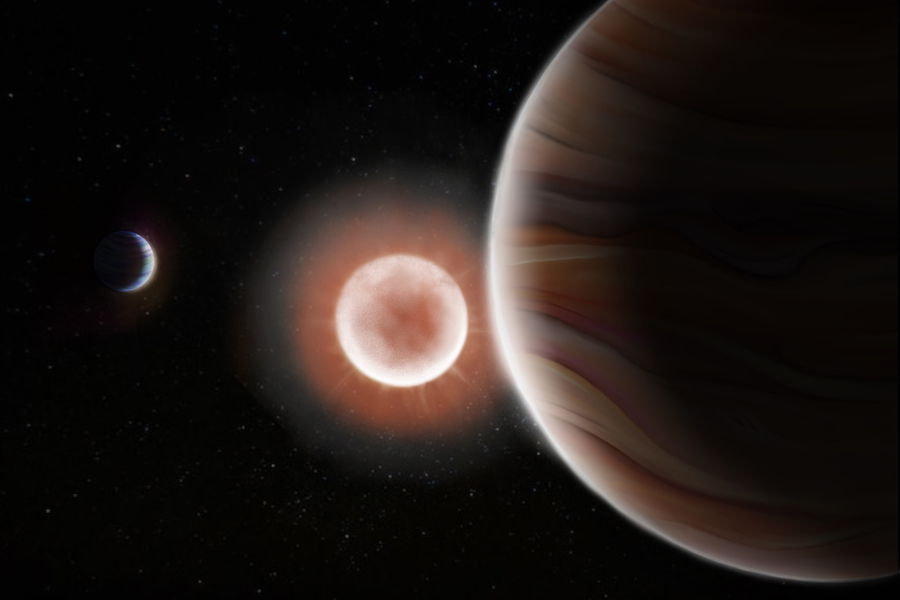August' 23
August 17: Separate Journeys , Common Goal
"Thanks for the ride, mate! 👋" said the Lander Module as it bid farewell to the Propulsion Module on its lunar journey. In an exciting milestone, the Indian Space Research Organisation (ISRO) achieved a successful separation, marking a crucial step in Chandrayaan-3's mission to explore the moon. After an incredible 34 days together on the spacecraft, the modules have now embarked on individual paths, with the Lander Module set for a controlled descent to a slightly lower orbit. Tomorrow, on August 18 at 4 pm IST, a planned deboosting will take place, setting the stage for the next phase of exploration. With three satellites now orbiting the moon, India's lunar aspirations have reached new heights. The Lander Module is equipped for a soft landing and rover deployment, promising in-situ chemical analysis of the lunar surface. Meanwhile, the Propulsion Module carries a valuable scientific payload operational for the next three to six months. Kudos to ISRO for steering this celestial journey with precision and expertise!
August 23: Touchdown! Chandrayaan -3 makes history
Indian Space Research Organisation (ISRO) on Wednesday, August 23, broke the news about Chandrayaan-3’s successful moon landing in an interesting way. 'I reached my destination and you too!' came the message from Chandrayaan 3 to ISRO's Bengaluru headquarters after it soft-landed on the south polar region of the moon. Congratulations, India! In its first 'reaction' after Wednesday's successful soft-landing on the Moon, Chandrayaan-3 ‘said’ that it was not just the mission alone, but the entire country that had reached the Moon with it. India has triumphed as the fourth nation to achieve a soft landing on the Moon, joining the esteemed company of the United States, Russia, and China. A distinctive honor accompanies this success—India is the first country to reach the previously unexplored south pole of the Moon, surpassing recent challenges faced by Russia's Luna 26 mission. Chandrayaan-3's lander module, featuring Vikram and Pragyaan, executed a flawless descent on schedule, marking a pivotal moment in space exploration. Prime Minister Narendra Modi, connecting from the 15th BRICS summit in South Africa, conveyed his congratulations, emphasizing this as the "new flight of new India" and underscoring India's commitment to human spaceflight. Chandrayaan-3, a sequel to Chandrayaan-2, underscores India's scientific prowess with soft landing and in-situ experiments on the Moon.

August 24: The bright spots of Neptune
A groundbreaking discovery emerged as astronomers using the European Southern Observatory's (ESO) Very Large Telescope (VLT) have observed an unexpected smaller bright spot, marking the first time such features have been observed from our Earthly vantage point. The mysteries of these occasional spots in Neptune's blue backdrop have puzzled astronomers for years, but the latest observations suggest they result from air particles darkening below the main haze layer, where ices and hazes mix in the planet's atmosphere. In a twist of fate, the research uncovered an unexpected revelation. Michael Wong, co-author of the study, shared the excitement of this discovery, stating, "In the process, we discovered a rare deep bright cloud type that had never been identified before, even from space." This revelation was no small feat, as dark spots are fleeting phenomena in Neptune's ever-changing atmosphere. The breakthrough came when the NASA/ESA Hubble Space Telescope identified several dark spots, enabling astronomers to scrutinize them in unprecedented detail, thanks to the capabilities of ESO’s VLT. This discovery represents a significant leap forward in unraveling Neptune's atmospheric dynamics and sheds light on the mysteries of our distant celestial neighbor.

August 31: The Longest lap
In a cosmic discovery, scientists from The University of New Mexico (UNM) and the Massachusetts Institute of Technology (MIT) have unveiled two of the longest-period exoplanets ever detected by NASA’s Transiting Exoplanet Survey Satellite (TESS). Meet TOI-4600 b and c, a dynamic duo orbiting the nearby star TOI-4600, situated an astounding 815 light years from Earth. These celestial wonders belong to the intriguing class of warm Jupiters and elegantly orbit a K dwarf star. While over 80 percent of confirmed exoplanets boast orbits under 50 days, the mystery of those with longer orbital periods has left astronomers in the dark—until now. The team uncovered an inner planet mirroring Mercury's 82-day orbit and an outer planet with an impressive 482-day orbit, nestled between Earth and Mars. TESS, led by MIT, played a crucial role in this discovery, unveiling not only the longest orbital period recorded but also the coldest at -117 degrees Fahrenheit. These gas giants, blending gas and ice, provide a cosmic bridge, filling the void between "hot Jupiters" and the colder, longer-period giants in our solar system

